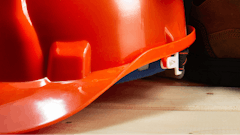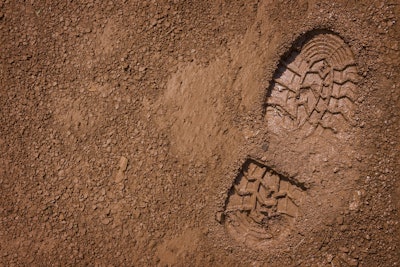
Let’s say you need concrete, but limestone isn’t available. At all, like, on the planet. What are you going to do? That’s what researchers are examining, and the results are always interesting. The “race” to figure out how to construct permanent structures on the Moon and Mars has been one conundrum of chicane. We’ve put robots on surfaces of celestial bodies and there’s a sedan floating somewhere out there. Getting “stuff” off planet is one thing but launching enough construction materials is something entirely different.
Researchers have been thinking about this scenario with a few ideas. One that made headlines not too long ago was making concrete with blood and urine.
Gruesome.
According to a study in the journal Open Engineering (published March 2023), researchers from the University of Manchester in England have created “StarCrete” using potato starch as a binder.
Using a mixture of simulated Martian and lunar soils created a concrete which performed at more than double comprehensive strength of an ordinary Earth-based concrete.
Earth-based sounds weird, but according to Aled Roberts, who led the project, says they were interested in this research because of how it forces one to think outside the box. "The difficulties and constraints associated with building on the Moon and Mars forces you to come up with new ideas and innovative solutions to problems. These ideas can then “trickle down” to applications on Earth," says Roberts.
As stated in the abstract, “after optimization, lunar and Martian StarCrete achieved compressive strength of 91.7 and 72.0 Megapascals (MPa), respectively.” For comparison, they report a high-strength concrete’s compressive strength sits at about 42 MPa.
Compressive Strength
- Ordinary High-Strength Concrete: 42 MPa
- Lunar Concrete: 91.7 MPa
- Martian StarCrete: 72.0 MPa
Flexural Strength
- Ordinary High-Strength Concrete: 2.5-4.5 MPa
- Lunar Concrete: 2.1 MPa
- Martian StarCrete: 8.4 MPa
Scientists estimate, as Space.com reports, that about 55 lbs. of dehydrated potatoes would be enough to produce 200 bricks (almost a half-ton of StarCrete). This provides a much more agreeable situation for the potential astronauts considering the more gruesome alternatives.
The Mix
Researchers used corn starch as a binder for the sand and limestone power aggregates – cleverly calling the mixture “CoRncrete.” While it was able to produce 30 MPa compressive strength, it was very susceptible to moisture (which is why we don’t use it here, on Earth). Yet, the surface on Mars and the Moon are a different situation.
They experimented with a set of starch sources from a waxy maize, rice, wheat, and even tapioca. Yet, potato ended up producing a better binder. It was at this stage; they renamed the product to the StarCrete (the combination of “starch” and “concrete).
Next was additives. They tested magnesium chloride, acetic acid, sodium carbonate, ferrous sulfate, urea, and even human saliva. Both urea and acetic acid had a positive effect on the results. While it underperformed in tests, magnesium chloride did end up creating a “sticker” mixture than others. Out of curiosity, they kept it in the subsequent tests.
Further tests and experiments were conducted to discern the right temperature and time. One experiment with urea pushed the limits to 120-180 minutes and 120-180 C respectively resulting in a poisonous gas. An unwanted result if you’re stuck in a confined environment.
With that risk, researchers were left with six conclusions, one was to take urea out of the tests – leaving magnesium chloride.
- “A starch-regolith ratio of about 4.5% appeared to be optimal;
- A lower effective binder concentration (i.e., more water during the gelatinisation step) increased ultimate compressive strength;
- A higher compression force increased ultimate compressive strength slightly;
- A longer gelatinisation time increased ultimate compressive strength; and
- A lower rehydration extent increased ultimate compressive strength.”
Roberts describes the mix "interesting and unusual" which makes a lot of sense because combining starch and water creates oobleck - a non-Newtonian fluid. Roberts says the mixture behaved in a similar fashion yet easy to work with a fairly low viscosity.
While there is potential, studies need to continue. Researchers are suggesting that future experiments search for other sources (potentially a broader range of starches) and additives, continued research into the binder, testing the extra-terrestrial concrete with simulated conditions, impact resistance (think meteor strikes), and more. They even are calling for an investigation into if StarCrete will work for 3D printing.
Who knows, maybe this research will even uncover a new concrete for Earth.
Roberts says that off-world construction research could lead to many new discoveries. "For example, NASA is funding advanced 3D printing construction technologies for the Moon and Mars which could lead to the technologies being applied on Earth. This could save time, material and manpower," they say.
Find the full article at “StarCrete: A starch-based biocomposite for off-world construction”.
Since conclusion of the research, Roberts says they set up a company to develop similar technologies but are focusing on ceramic tiles instead of concrete.

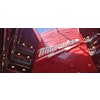

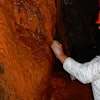
![Adobe Stock 350182902 1 6759c43d679ca[1]](https://img.forconstructionpros.com/files/base/acbm/fcp/image/2025/02/AdobeStock_350182902__1_.6759c43d679ca_1_.67b78c75671e9.png?auto=format%2Ccompress&fit=crop&h=100&q=70&w=100)

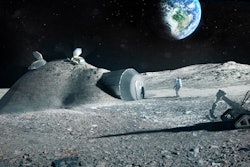
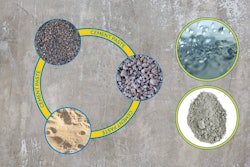



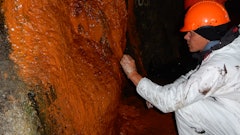
![Adobe Stock 350182902 1 6759c43d679ca[1]](https://img.forconstructionpros.com/files/base/acbm/fcp/image/2025/02/AdobeStock_350182902__1_.6759c43d679ca_1_.67b78c75671e9.png?ar=16%3A9&auto=format%2Ccompress&fit=crop&h=135&q=70&w=240)






